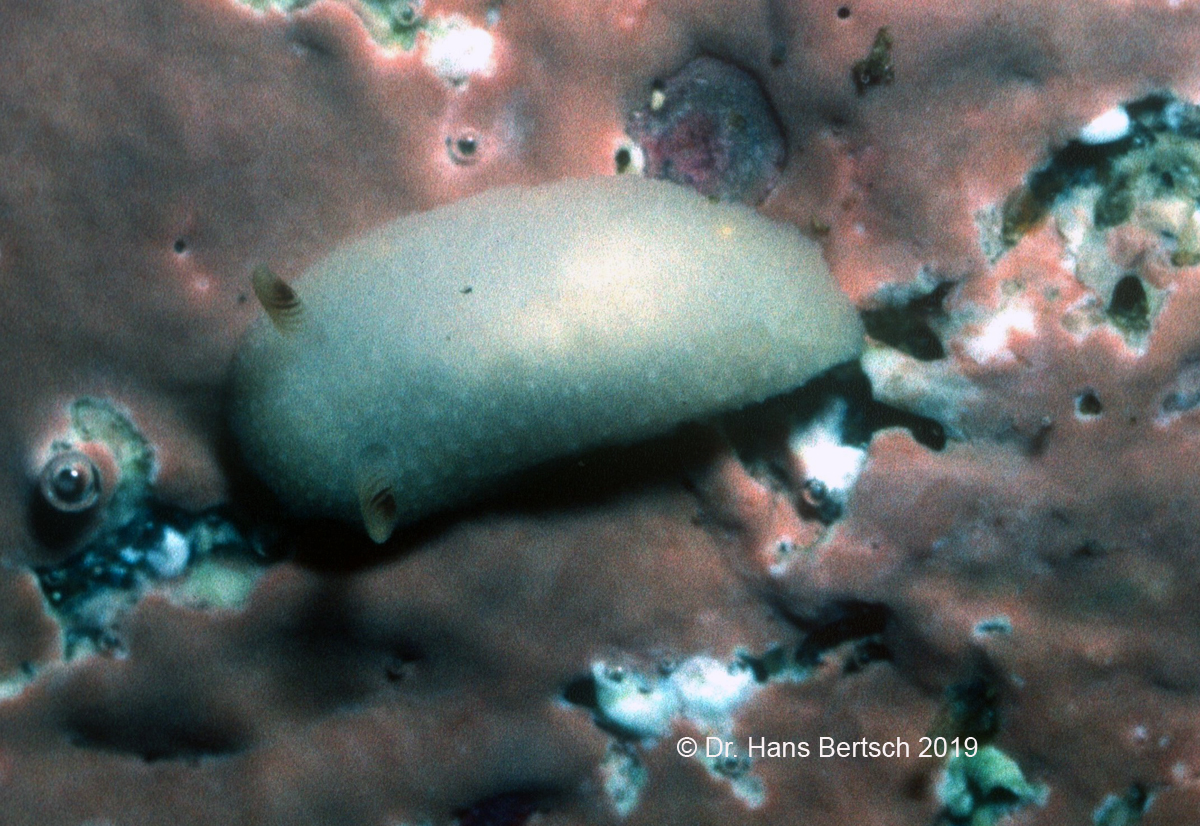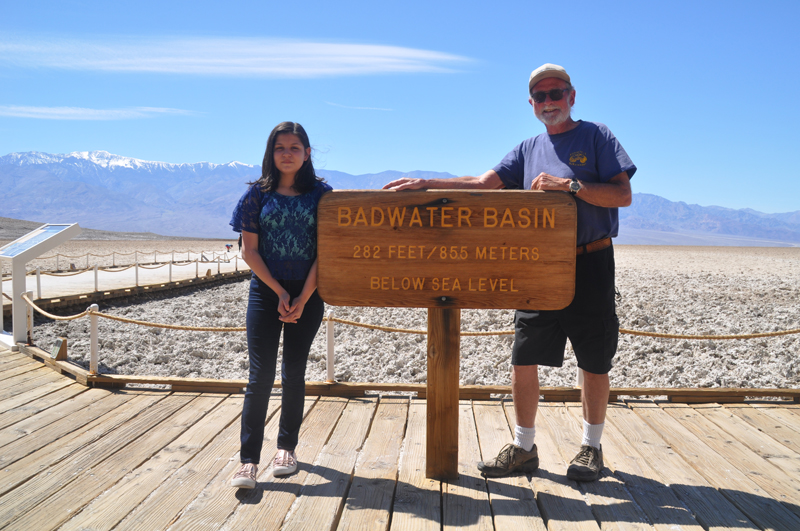 |
Image courtesy of Dr. Hans Bertsch
Aquarium photo of 10 mm long specimen of Cadlina sp., collected at Punta la Gringa, Bahía de los Ángeles, on 9 May 1986, in 11 feet of water.
Recently, the BOW has presented a dozen or more unnamed Lomanotus species and an unnamed Thorunna from the Indo-Pacific. To emphasize our global lack of knowledge, this week I give you an unnamed dorid from the tropical eastern Pacific, on the other side of the Big Pond. The oceans need our protection, before we lose what we don’t even know we have.
Cadlina sp. (Common names: Banded Cadlina, Cadlina Bandeada)
Description: White body with 4-5 large yellow specks. Rhinophores white, with a dark red or brown medial band. Size: Up to 0.3 inches in length. Habitat: Intertidal and shallow subtidal. Distribution: Bahía de los Ángeles, central Gulf of California, to Costa Rica and Panamá. Also reported from Isla Isabel, Islas Revillagigedo, and Bahía de Banderas. Remarks: This yet-unnamed cadlinid is distinguished by its spotting and rhinophoral banding.
Descripción: El cuerpo es blanco con 4-5 grandes manchas amarillas. Los rinóforos son blancos, y tienen una banda media café o roja obscura. Tamaño: Llega a medir 10 mm. Hábitat: Se encuentra en la zona intermareal y en la parte somera del submareal. Distribución: Desde Bahía de los Ángeles (en la parte central del Golfo de California hasta Costa Rica y Panamá. También se reporta desde Isla Isabel, Islas Revillagigedo, y Bahía de Banderas. Observaciones: Esta especie de cadlínido todavía sin nombrar, se distingue por sus manchas y bandas rinoforales.
(Information above was modified from Invertebrados Marinos del Noroeste de México / Marine Invertebrates of Northwest Mexico, by Hans Bertsch & Luis E. Aguilar Rosas (2016, page 263).
Additional photographs of this species are found in Guía de Campo de las Babosas Marinas del Pacífico Este Tropical / Field Guide to the Sea Slugs of the Tropical Eastern Pacific, by Yolanda Camacho-García, Terrence M. Gosliner and Ángel Valdés (2005, p. 81, aquarium, photo) and Opistobranquios de México: Guía de Babosas Marinas del Pacífico, Golfo de California y las Islas Oceánicas, by Alicia Hermosillo, David W. Behrens and Eduardo Ríos Jara (2006, p. 86, in situ photo with egg mass).
 |
Hans with granddaughter Adriana Ivette Cadena (of Tenellia ivetteae fame), at Badwater, Death Valley. At -282 feet (-85.5 m) it is the deepest point on the continental United States, and deeper than Hans, Webmaster Mike, and contributors Dave Behrens or Jan Kocian have ever dove!
Dr. Hans Bertsch
Imperial Beach, Calif
Jun., 2019
Send Hans email at hansmarvida@sbcglobal.net